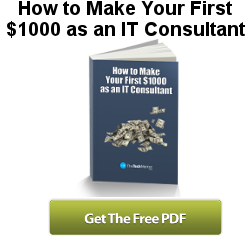In today’s fiercely competitive business landscape, maximizing cost savings without compromising quality is a top priority for every organization. As procurement plays a pivotal role in the overall success of a company, finding innovative ways to reduce expenses while maintaining efficiency is a constant challenge. Whether you’re a seasoned procurement professional or a business owner seeking to tighten the purse strings, this comprehensive guide is your compass to navigate through the cost-cutting maze. Get ready to unlock the secrets of industry experts and discover proven strategies that will revolutionize your procurement process and boost your bottom line. Let’s dive in to see how this can help your IT business or other business!
Implement Measures to Optimize Spending
You can optimize spending through Cost control. Cost control is a critical aspect of cutting procurement costs effectively. As seen at https://www.procuredesk.com/procurement-cost-control/, it involves implementing a range of measures to optimize spending and achieve cost-efficiency throughout the procurement process. This can include negotiating better deals with suppliers, scrutinizing budgets to eliminate unnecessary expenses, and fostering a culture of cost-consciousness within the organization.
Additionally, adopting advanced data analytics and tracking tools enables businesses to monitor expenditures in real time, facilitating timely interventions when deviations occur. By continuously assessing and reassessing cost-control strategies, businesses can identify areas of improvement and adjust their procurement practices accordingly, leading to significant long-term savings.
Strategic Supplier Management
Strategic supplier management plays a pivotal role in cutting procurement costs while ensuring high-quality goods and services. Establishing strong and collaborative relationships with key suppliers allows for more favorable negotiation terms, volume discounts, and extended payment arrangements. By analyzing supplier performance and reliability, organizations can identify opportunities for consolidation and reduce the number of suppliers, leading to increased bargaining power and lower administrative costs.
Furthermore, fostering open communication with suppliers enables proactive resolution of potential issues, minimizing the risk of disruptions and additional expenses. Through a well-defined supplier management strategy, businesses can achieve sustainable cost reductions and enhance overall procurement efficiency.
Data-Driven Decision Making
Data-driven decision making is a fundamental approach to cutting procurement costs with precision and confidence. By harnessing the power of data analytics, organizations can gain valuable insights into their spending patterns, supplier performance, and market trends. This data-driven approach allows for the identification of cost-saving opportunities, such as negotiating better terms with suppliers, optimizing inventory levels, and predicting demand fluctuations.
Historical data analysis also aids in streamlining procurement processes and identifying areas for improvement, leading to increased efficiency and reduced operational expenses. Emphasizing data-driven decision making empowers businesses to make informed choices, enhance cost control measures, and achieve sustainable cost reductions in the long run.
Supplier Diversification and Competition
Supplier diversification and fostering healthy competition are instrumental in cutting procurement costs while maintaining quality and innovation. Diversifying the supplier base reduces reliance on a few key vendors, mitigating the risk of supply chain disruptions and potential price hikes. Encouraging competition among suppliers compels them to offer more competitive pricing, improved service levels, and innovative solutions to win contracts.
Businesses can achieve cost savings by leveraging competitive bids and negotiating favorable terms from multiple suppliers. Moreover, exploring new suppliers with innovative offerings can lead to cost-effective alternatives without compromising on product or service quality, thus contributing to strategic procurement cost reductions.
Value Engineering and Total Cost of Ownership
Value engineering and total cost of ownership (TCO) are essential methodologies for cutting procurement costs without sacrificing quality and functionality. Value engineering involves scrutinizing product or service specifications to identify potential cost-saving modifications without compromising performance
By collaborating with suppliers and stakeholders, businesses can find innovative alternatives that deliver the same or enhanced value at reduced costs. TCO analysis also goes beyond the initial purchase price and considers maintenance, operational, and disposal costs over the product’s lifecycle. This comprehensive approach enables informed decision-making, leading to investments in cost-effective solutions that provide long-term savings and superior value.
Demand Forecasting and Inventory Management
Demand forecasting and effective inventory management are vital components for cutting procurement costs while ensuring sufficient stock levels. Accurate demand forecasting enables businesses to anticipate fluctuations in demand, avoiding overstocking and stockouts that result in excess carrying costs or missed sales opportunities. By leveraging historical data and market trends, organizations can make informed decisions on when and how much to procure.
Efficient inventory management, such as adopting just-in-time practices, minimizes inventory holding costs and reduces the risk of obsolescence. Integrating demand forecasting and inventory management facilitates a streamlined procurement process, maximizing cost efficiency while maintaining a responsive supply chain.
Process Streamlining and Automation
Process streamlining and automation play a crucial role in cutting procurement costs by eliminating inefficiencies and reducing manual interventions. Through careful evaluation and optimization of procurement workflows, organizations can identify bottlenecks and redundant steps that impede efficiency. Implementing automation tools for tasks like purchase requisitions, supplier onboarding, and invoice processing streamlines operations, saving time and reducing the risk of errors.
Furthermore, automation enables real-time data tracking and analysis, facilitating better decision-making and proactive cost-control measures. By embracing process streamlining and automation, businesses can streamline procurement operations, allocate resources more effectively, and achieve significant cost savings in the procurement process.
Risk Mitigation and Compliance

Risk mitigation and compliance efforts are essential in cutting procurement costs by safeguarding against potential disruptions and financial liabilities. Evaluating supplier risk factors, such as financial stability and geographic vulnerability, helps businesses proactively address potential supply chain disruptions that could lead to increased costs. Ensuring supplier compliance with ethical and regulatory standards mitigates the risk of legal and reputational consequences.
By developing contingency plans and diversifying suppliers, organizations can minimize the impact of unforeseen events and maintain continuity in procurement operations. Emphasizing risk mitigation and compliance fosters a secure and stable procurement environment, ultimately contributing to cost reduction and long-term financial sustainability.
IT start-ups and other growing companies need help with procurement in addition to such things as hiring and on-boarding, marketing and branding and so on. Read more here.
Cutting procurement costs requires a multifaceted approach that incorporates strategic supplier management, data-driven decision-making, supplier diversification, value engineering, demand forecasting, process streamlining, and risk mitigation. By embracing these expert tips and techniques, organizations can optimize spending, foster efficient procurement practices, and achieve sustainable cost reductions. A well-planned procurement strategy, grounded in data and innovation, will not only result in significant cost savings but also drive competitiveness, resilience, and long-term success in the dynamic business landscape.


Latest Comments